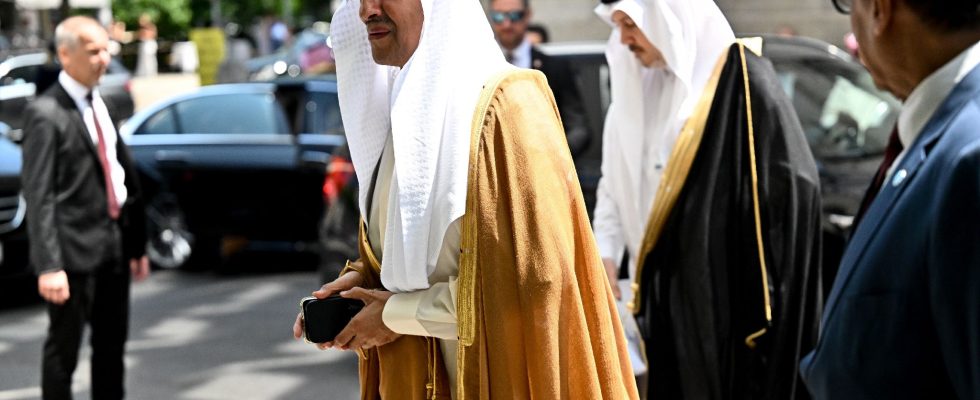The objective was clear: to raise oil prices at half mast in an economic context darkened by the war in Ukraine. Saudi Arabia, OPEC heavyweight, decided on Sunday June 4 to make a new production cut. This voluntary reduction of around one million barrels per day applies from July and may be extended, Prince Abdelaziz bin Salman said after an OPEC + meeting in Vienna. , which brings together the thirteen members of the Organization of the Petroleum Exporting Countries as well as their ten allies led by Russia.
In front of the press, the Saudi Minister of Energy was pleased to have spared “the suspense” with this measure which he described as a “Saudi treat”, “icing on the cake” to “bring stability to an extremely volatile market.
In addition, the reductions introduced since the beginning of May by nine countries, including Riyadh, Moscow, Baghdad or Dubai, for a total of 1.6 million barrels daily, “are extended until the end of 2024”, specified at the exit Russian Deputy Prime Minister Alexander Novak.
60% of world production of black gold
The negotiations lasted several hours, the Bloomberg agency reporting differences between the 23 participants, who represent 60% of the world’s production of black gold. After difficult discussions, the United Arab Emirates, eager to pump more, obtained an increase in its crude production quota for 2024, according to the new table published by OPEC.
On the other hand, Angola, Congo and Nigeria in particular, reluctant at first, have seen their targets lowered, which they are struggling to achieve. “We managed to come to an agreement”, welcomed Bruno Jean-Richard Itoua, Congolese Minister of Hydrocarbons. “We are very happy,” he insisted.
Ryad’s gesture comes as prices have fallen in recent months despite the unexpected announcement in early April of drastic cuts. This strategy has in fact failed to lift prices in a market depressed by fears of a global economic recession, rate hikes by the main central banks and the laborious recovery of demand in China as it emerges from the anti-Covid restrictions.
Brent, the benchmark for crude in Europe, is currently trading at $76 a barrel, and its US equivalent, WTI, at $71 – far from the highs recorded in March 2022 at the start of the conflict in Ukraine (nearly $140). .
An “image of unity”
While signs of discord between Riyadh and Moscow threatened to disrupt the meeting, “OPEC + displayed a united front”, commented for AFP Giovanni Staunovo, analyst at UBS. “They obviously have divergent views but they have demonstrated that they know how to work together.” “We had no disagreements. It’s a joint decision taken in the interest of the market,” assured Alexander Novak.
Despite its commitments, Russia is reluctant to further tighten the floodgates of black gold – manna used to finance its military offensive against Ukraine.
Moreover, Moscow would hardly benefit from higher prices. Due to Western sanctions, only Russian oil priced at or below $60 can continue to be delivered. Beyond this ceiling, companies are prohibited from providing services allowing maritime transport (freight, insurance, etc.).
“On the other hand, Saudi Arabia needs higher prices to balance its budget”, explains Barbara Lambrecht, of Commerzbank, who evokes a break-even point around 80 dollars a barrel.
After Riyadh’s announcement, analysts expect “a positive market reaction”, according to Tamas Varga of PVM Energy. In the longer term, however, “a decline in demand under inflationary pressure could cancel out the effect of this reduction in supply”, she warns. The alliance has already warned that it will convene an emergency meeting “if necessary”. For now, the next meeting in the Austrian capital has been set for November 26.
